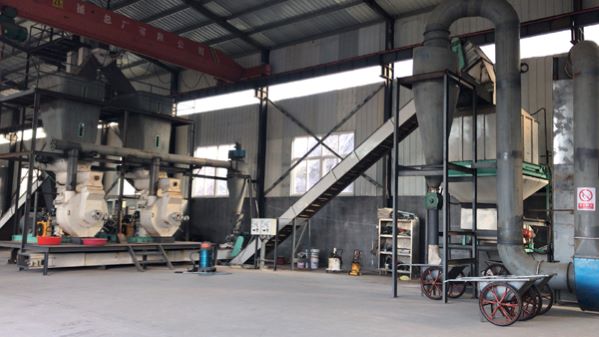Welcome to Rongda Machinery Co., Ltd
Toggle Navigation

As the world pushes harder for greener energy options, turning farm and forest leftovers into usable fuel has become a real game-changer. Sure, plenty of setups out there churn out basic biomass pellets, but what we're doing with our advanced biomass pellet machine takes it up a notch. By blending smart engineering tweaks and streamlined processes, it cranks out better results that really stand out in the field—think higher efficiency without all the usual headaches.
What really gives our system an edge is ditching the old-school flat-die setups for a vertical ring-die design, complete with that patented under-feeding technology. This keeps things running steady and packs the pellets denser than most, hitting that sweet spot of 1.1–1.2 mg/mm³. And it's not just about the basics; we've thrown in some clever features to make it last longer and handle more.
For starters, those dual-surface molds made from stainless steel? They come with a double-layer build that pushes their lifespan way out to 2,000–4,000 tons of biomass before needing a swap. Then there's the intelligent cooling systems—air-cooling loops that keep the gearbox lubed just right, cutting downtime by about 30% compared to the clunky older models. Plus, it chews through over 30 kinds of raw stuff, from wood chips and rice husks to trickier things like industrial waste or even municipal sludge. And get this: it manages high-moisture feedstocks up to 25%, which a lot of other machines just can't touch without extra fuss.
Now, when you stack it up against the usual suspects, the differences pop out. Take energy use—most pellet machines gun for high output but guzzle power along the way. Ours shaves off around 20% on consumption thanks to variable-frequency drives and a setup that grinds and dries in multiple stages all in one go, skipping the need for separate prep gear that others rely on.
On the toughness front, competitors often deal with parts that wear out fast from gritty materials like palm shells or cotton stalks. We counter that with chromium-manganese steel rollers and heat-treated molds built to take the abuse, dropping maintenance bills by roughly 40%. The modular design means you can swap pieces quick, keeping things humming without long stops—something you don't see much elsewhere.
And scalability? While a lot of suppliers lock you into rigid capacities, say 1–2 tons per hour, our biomass pellet plant lets you dial it in from 300 kg/h all the way up to 10,000 kg/h. It comes with the stamps of approval like CE, ISO, and TUV, which are must-haves if you're eyeing markets in Europe or North America. Generic ones often fall short on big regs like the Renewable Energy Directive (RED II), leaving you in a bind.
We've seen this play out in the real world too. Take this one client in Germany: they ramped up a 6-ton/hour line using our torrefaction-optimized process, nailing 98% uptime. It all came down to dialing in moisture between 0–10% and temps from 125–180°C, which beefed up pellet durability—backed by independent tests, no less.
Or down in Southeast Asia, where farmers grabbed our mobile units cranking 250–500 kg/h. They turned crop scraps straight into fuel on-site, slashing their diesel use by half and making energy more local and sustainable.
Looking ahead, we're not stopping here. We're experimenting with AI-driven predictive maintenance to spot issues before they bite, and hybrid torrefaction-pelletization systems aiming for calorific values around 5,000 kcal/kg. Meanwhile, a bunch of others are still stuck on those single-pellet press routines that feel a bit dated.
At the end of the day, it's about more than just selling a machine—it's handing over a full package, from planning your setup to round-the-clock support worldwide. With setups in over 1,000 spots across 45+ countries, this isn't gear; it's a solid step toward cutting carbon and closing the loop on waste. If you're chasing real sustainability, this could be the way to go.